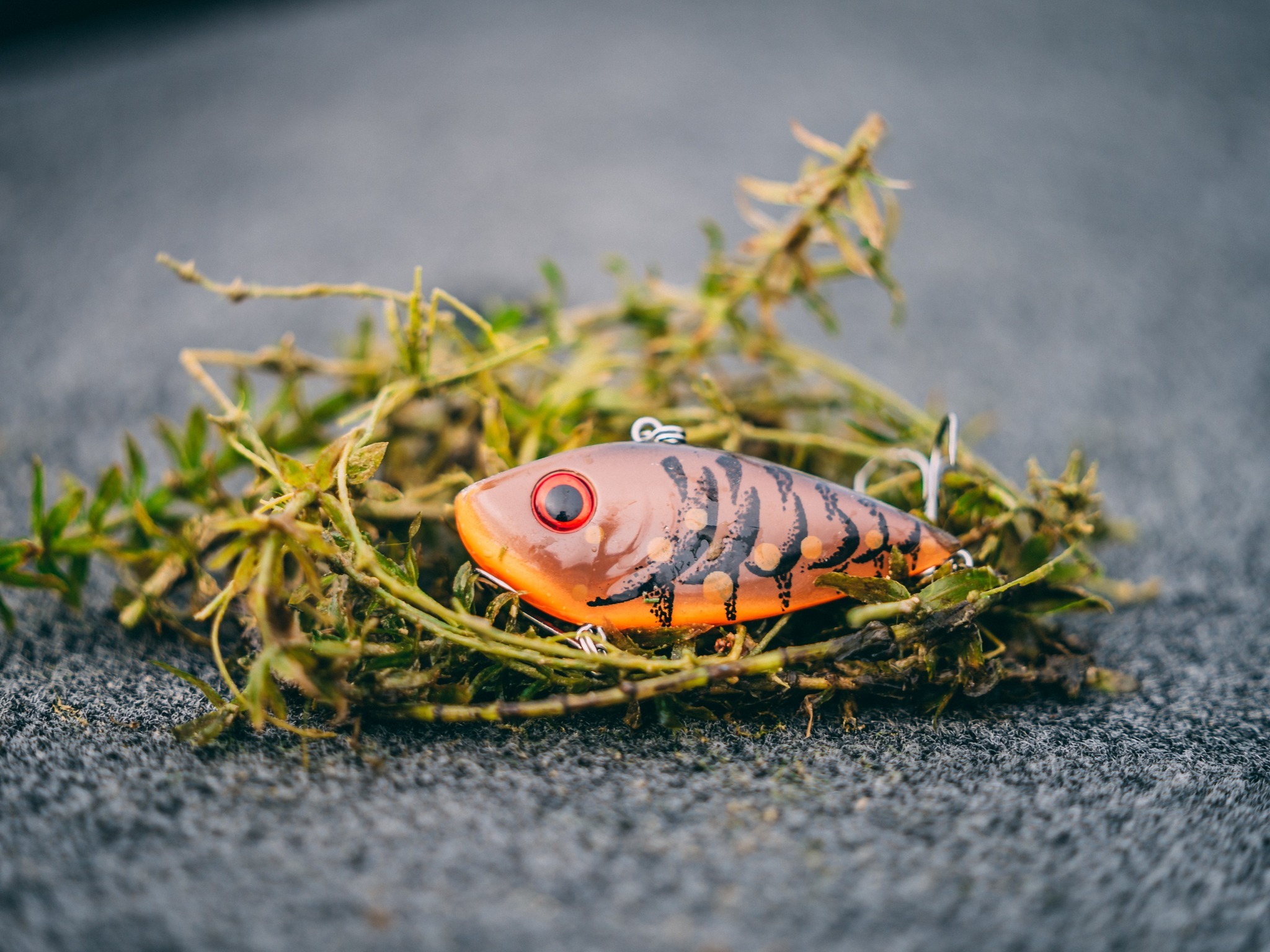Texas Bass Fishing: An Expert’s Complete Guide
By: FishUSA Staff
August 21, 2025
Texas isn’t just big—it fishes big. Between East Texas grass lakes, Hill Country highland reservoirs, and the canyon-clear border waters of Amistad and Falcon, the Lone Star State offers year‑round opportunities for numbers and true giants. I’ve ripped red traps across Rayburn drains in February, crawled mag worms on Fork roadbeds in June, and watched schooling wolfpacks torch shad on Travis in October. This guide distills that time on the water into a practical, season-by-season plan with lake-by-lake tactics that flat-out catch bass in Texas.
Texas isn’t just big—it fishes big. Between East Texas grass lakes, Hill Country highland reservoirs, and the canyon-clear border waters of Amistad and Falcon, the Lone Star State offers year‑round opportunities for numbers and true giants. I’ve ripped red traps across Rayburn drains in February, crawled mag worms on Fork roadbeds in June, and watched schooling wolfpacks torch shad on Travis in October. This guide distills that time on the water into a practical, season-by-season plan with lake-by-lake tactics that flat-out catch bass in Texas.
Table of Contents
Why Texas Produces Giants
Three ingredients: Florida‑strain genetics (ShareLunker lineage), long growing seasons, and varied habitat. East Texas reservoirs brim with hydrilla and coontail; the Hill Country adds rock, docks, and blueback/threadfin shad forage; West/Border lakes bring deep rock, roadbeds, timber, and mesquite. That diversity lets every style—power grass fishing, offshore structure work, clear‑water finesse, and big‑bait hunting—shine somewhere, almost every month.
Seasonal Patterns (Month‑by‑Month)
- January: Big females stage on channel swings and timbered points. Jerkbaits over trees (Fork/Amistad), umbrella rigs on shad schools, and heavy jigs on rock transitions. Power‑plant lakes (Fayette) run hot for numbers.
- February: Classic red‑trap month over emerging grass (Rayburn/Toledo). Flat‑sides on drains; spinnerbaits in stain. In South Texas, first bed fish slide up on warm spells.
- March: Peak pre‑spawn/spawn. Sight‑fish clear pockets; flip jigs/beavers to reeds and laydowns in stain. Chatterbaits/swim jigs haunt grass edges. Glide baits tempt true giants on staging cover.
- April: Post‑spawn begins south, lingering spawn north. Shad spawn at dawn on riprap/grass/seawalls—buzzbaits, walkers, and swim jigs tight to the bank; mid‑day = wacky rigs and weightless flukes in shade.
- May: Recovery feed + first offshore groups. Graph secondary points/humps; deep cranks wake up. Frogs over mats morning/evening; poppers over bluegill beds near docks and reeds.
- June: Offshore season arrives. Ledges, roadbeds, shell/hard spots: trigger with deep crank, mop up with football jig/Carolina rig/mag worm; spoons if they suspend. Keep a big topwater ready for schooling.
- July: Heat = timing. Fish current/thermocline edges, wind‑blown structure, and deep brush. Night bites fire in the Hill Country—slow‑roll spinnerbaits and drag 10–12″ worms on points.
- August: Dog days. Either finesse (drop shot/Ned around timbered points) or go big (mag spoons/glides on suspended schools). Punch mats mid‑day for reaction bites.
- September: Transition—young shad flood the backs. Small walkers, squarebills, and finesse swimbaits cover water in creeks and flats.
- October: Peak fall feed. Wind‑blown banks and long points go all day. Burn lipless and spinnerbaits; chase birds to find blitzes.
- November: Bigger baits/bigger bites. Jerkbaits on rocky points, A‑rigs on shad balls, slow‑rolled swimbaits over timber tops.
- December: Winter groups set. Spoon vertically on timbered humps, drag jigs on bluff ends, and rip jerkbaits on sunny slicks. Power‑plant lakes remain consistent.

Best Bass Lakes In Texas (How to Fish Each)
Lake Fork
Lake Fork is a powerhouse fishery with standing timber, winding creek channels, and healthy grass lines. In the spring, flipping jigs and creature baits to shallow timber produces consistent bites, and big glide baits or soft swimbaits can tempt giants staging on points. During the summer, idling along roadbeds and main-lake points often reveals offshore schools that can be fired up with deep crankbaits before switching to football jigs or Carolina rigs. In colder months, jerkbaits over submerged trees and spoons on timbered humps are reliable choices.
Sam Rayburn
Sam Rayburn is known for its vast grass flats and submerged drains, along with well-defined offshore structure. In the prespawn, red lipless crankbaits and chatterbaits that tick the grass are deadly. Once the post-spawn sets in, the first shell beds just off the grass lines become key feeding spots. In summer, community holes tend to reload with fish, making deep cranks, big worms, and spoons highly effective. Keeping a walking topwater nearby is smart for when schooling activity breaks out.
Toledo Bend
Toledo Bend offers a mix of timber-filled creek arms, grass flats, and massive offshore structure along the Texas-Louisiana border. During the prespawn, cranking channel swings and long points is productive. Later in the year, dragging Carolina rigs across ridges and ledges is a dependable approach. When baitfish suspend, spoons and umbrella rigs are excellent tools, and wind-blown grass edges can produce big bites on chatterbaits.
Lake Amistad
Lake Amistad is a canyon-clear reservoir with deep rock structure, flooded brush, and even a population of smallmouth bass. In the winter, jerkbaits and vertical minnow presentations over submerged trees can be very effective. Spring brings prime sight-fishing in protected coves, where natural-colored plastics excel. In the summer, topwater lures on long points shine at dawn, while deep cranks and jigs on ledges and saddles take over later in the day.
Falcon Lake
Falcon Lake is a shallow, brush-filled reservoir with a well-earned reputation for producing giant bass when water levels are favorable. Flipping mesquite and brush piles with heavy gear is the go-to strategy here. On windy days, slow-rolling spinnerbaits and chatterbaits can trigger reaction bites. Offshore rockpiles and ledges also hold quality fish, and fishing them with big worms or deep-diving crankbaits can lead to memorable catches.
Ray Roberts
Ray Roberts is a North Texas reservoir featuring timbered shorelines, main-lake points, and scattered grass. In the spring, spinnerbaits and chatterbaits work well, as does pitching to flooded cover. Once summer arrives, deep points and brush piles become the focus, with football jigs and 10-inch worms being top producers. After passing cold fronts, schooling activity often picks up on ridges.
Choke Canyon
Choke Canyon features a mix of cypress trees, aquatic vegetation, and rocky structure, making it a versatile bass fishery. In the spring, frogs and flipping presentations excel around shallow cover. During the summer, offshore humps and channel swings are the best bet, especially when fished with deep crankbaits or Carolina rigs. The strikes here are often aggressive and memorable.
Highland Chain: Travis, LBJ, Austin
The Highland Chain lakes—Travis, LBJ, and Austin—offer clearer water, current influence, and abundant docks and rocky points. Early mornings are prime for topwater action on points and seawalls, while mid-day is best spent skipping jigs or weightless plastics under docks. At night, big worms and glide baits can coax trophy bass, especially in the summer.
Lake Conroe
Lake Conroe is a highly pressured fishery where brush piles and boat docks often hold the key to success. Fishing jigs or shaky heads in submerged brush produces bites, and the shad spawn around riprap in spring is an excellent opportunity to throw crankbaits. When boat traffic increases, downsizing presentations and slowing down usually pays off.
Caddo Lake
Caddo Lake is a visually stunning fishery with cypress forests, lily pads, and winding lanes through shallow water. Frogs and swim jigs are ideal for working through the lanes, while pitching to cypress knees can produce bigger bites. Squarebill crankbaits are effective on isolated wood along wind-blown banks.
Fayette County Lake
Fayette County Lake is a power-plant lake where warm-water discharge keeps the bite active all year long. Lipless crankbaits and jerkbaits are excellent around the grass and in current lanes, making it a reliable choice for consistent action even in the coldest months.

Texas Tactics, Lures & Boat Setup
Presentations That Consistently Produce
- Grass Program: Prespawn lipless/flat‑sides; chatterbaits & swim jigs as grass tops out; frogs at dawn/overcast; punch 1–1.5 oz when the sun’s high.
- Offshore Program: Idle for hard spots and schools on ledges/roads; deep crank to trigger, then football jig, C‑rig, or mag worm; spoons/A‑rigs when suspended.
- Clear‑Water Program: Long casts, light line; jerkbaits and glides on wind; drop shot/Ned when they sulk. Natural shad/green pumpkin rule.
- Big‑Bait Play: Winter/spring glides and 6–8″ soft swimmers raise your ceiling. Fewer bites, bigger average—commit during prime windows.

Electronics & Boat Control
- Graph before casting: Side/forward imaging to find schools, brush, timber tops; waypoint clusters, then set cast angles.
- Use wind: Let wind push bait across points/grass edges; line the boat to keep baits grinding bottom where they live.
- Cycle spots: Offshore schools reload—rotation beats camping. Return with a different bait/angle.

Practical Tips from the Water
- Chase life, not shoreline: Birds dipping, nervous water, and bait on screen beat “pretty banks.”
- Color logic: Cold/stained = red, copper, black/blue. Clear/sunny = shad, ayu, green pumpkin. Shad spawn dawn = white/chartreuse.
- Pressure fixes: Downsize blades, go silent, switch to natural skirts, lengthen leaders, and change angles on bluebird post‑fronts.
- Safety first: Timber eats lower units (Fork/Toledo)—idle unknown water. West Texas wind stacks big rollers—pick safe launches and routes.
- Fish the window: Best bites cluster around weather changes, first/last light, and wind shifts. Be on A‑spots then.
Licenses, Rules & Access
You’ll need a valid Texas freshwater fishing license (age requirements/exemptions apply). Some lakes (e.g., Fork) have special size/slot regulations—always check the latest TPWD rules before launching. Ramps and marinas are plentiful on major reservoirs; power‑plant and timbered lakes pose unique hazards—study maps and local notices.
Quick FAQs
Best month for a double‑digit?
Late February–April on East Texas grass lakes (Fork, Rayburn, Toledo). South Texas (Falcon/Amistad) can pop giants from January on warm trends.
Do I need heavy gear?
For grass/punching: yes (65 lb braid, heavy rods). Offshore/clear water: bring medium/medium‑heavy with 10–15 lb fluoro and long‑cast jerkbait/topwater setups.
Bank fishing options?
Riprap near dams, park piers, and marina seawalls—especially during shad spawn (Apr–May) and fall runs at first light.
Final Word
Texas rewards anglers who blend power and precision—rip a trap through grass at sunrise, then dissect offshore structure after breakfast. Let wind and electronics guide you, match baits to the forage, and time those bite windows. Do that, and Texas will give you what every bass angler wants: reliable numbers—and a real shot at the bass of a lifetime.
Shop Bass Tackle & Gear

